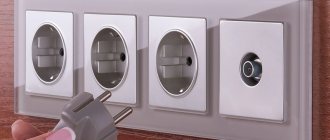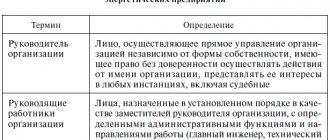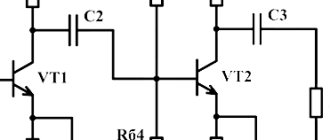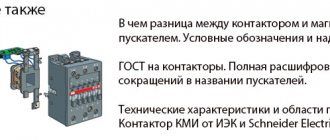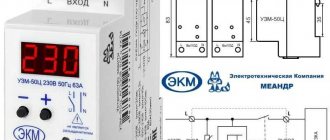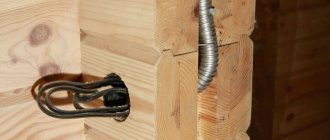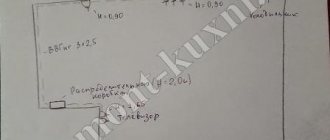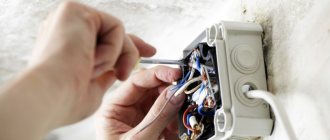Electrical installation devices
6.6.21.
The requirements given in paragraphs. 6.6.22-6.6.31, apply to devices (switches, switches and sockets) for rated current up to 16 A and voltage up to 250 V, as well as plug connections with protective contact for rated current up to 63 A and voltage up to 380 V ¶ 6.6.22. Devices installed hidden must be enclosed in boxes, special casings, or placed in holes in reinforced concrete panels formed during the manufacture of panels at construction industry factories. The use of flammable materials for the manufacture of covers covering openings in panels is not allowed. ¶
6.6.23. Socket outlets installed in locked storage areas containing flammable materials or materials in flammable packaging must have a degree of protection in accordance with the requirements of Chapter. 7.4. ¶
6.6.24. Plug sockets for portable electrical receivers with parts subject to protective grounding must be equipped with a protective contact for connecting a PE conductor. In this case, the design of the socket must exclude the possibility of using current-carrying contacts as contacts intended for protective grounding. ¶
The connection between the grounding contacts of the plug and the socket must be established before the current-carrying contacts come into contact; the shutdown order should be reversed. The grounding contacts of socket outlets and plugs must be electrically connected to their housings if they are made of conductive materials. ¶
6.6.25. Plug connectors must be designed in such a way that they cannot be plugged into socket outlets with a higher rated voltage than the rated voltage of the plug. The design of sockets and plugs should not allow the inclusion of only one pole of a two-pole plug, as well as one or two poles of a three-pole plug, into the socket. ¶
6.6.26. The design of plug connectors must prevent tension or breakage of the wires connected to them at the connection points. ¶
6.6.27. Switches and switches for portable electrical receivers should, as a rule, be installed on the electrical receivers themselves or in electrical wiring laid fixedly. On moving wires it is allowed to install only switches of a special design intended for this purpose. ¶
6.6.28. In three- or two-wire single-phase lines of networks with a grounded neutral, single-pole switches can be used, which must be installed in the phase wire circuit, or two-pole ones, and the possibility of disconnecting one neutral working conductor without disconnecting the phase conductor must be excluded. ¶
6.6.29. In three- or two-wire group lines of networks with an insulated neutral or without an insulated neutral at voltages above 50 V, as well as in three- or two-wire two-phase group lines in a 220/127 V network with a grounded neutral in rooms with increased danger and especially dangerous ones, they should be installed double pole switches. ¶
6.6.30. Socket outlets must be installed: ¶
1. In industrial premises, as a rule, at a height of 0.8-1 m; when supplying wires from above, installation at a height of up to 1.5 m is allowed. ¶
2. In administrative, office, laboratory, residential and other premises at a height convenient for connecting electrical appliances to them, depending on the purpose of the premises and interior design, but not higher than 1 m. It is allowed to install plug sockets in (on) specially adapted for this skirting boards made of non-combustible materials. ¶
3. In schools and child care institutions (in premises for children) at a height of 1.8 m. ¶
6.6.31. Switches for general lighting fixtures should be installed at a height of 0.8 to 1.7 m from the floor, and in schools, nurseries and kindergartens in rooms for children - at a height of 1.8 m from the floor. It is possible to install switches under the ceiling with cord control. ¶
Source: www.elec.ru
World standards of all countries for sockets, plugs, voltage and current frequency
11.04.2014
estravel
When preparing to travel abroad, we take with us many electronic gadgets, such as electric razors, phones, tablets, laptops, e-readers, cameras, MP3 players, etc. But not everyone knows that every country has a different electrical system, with different standards of electrical plugs and sockets, different frequencies, voltages and currents.
Therefore, before traveling abroad, it is a good idea to find out in advance about the electrical system in the country you will be visiting. Otherwise, it may turn out that in your host country you will not be able to charge your electronic device or even turn it on for mains operation.
Most power supplies for electronic devices such as laptops, chargers, mobile devices, camcorders and cameras have a universal power supply, so they are capable of operating at a supply voltage of 100 to 240 Volts, and a frequency of 50 or 60 Hz.
Map diagram of the use of voltage and current frequency in different countries of the world
As you can see, most electronic devices and gadgets are adapted to work in a wide range of electrical systems in different countries, but there is a very important point related to the variety of electrical plugs and sockets in these electrical systems. In different countries, the standards for sockets and plugs are different, so you simply cannot connect the charger to this outlet, since it simply will not fit there.
To protect ourselves from such disappointments, we should take care of this in advance by purchasing the appropriate adapter or adapter for charging this device. Today you can buy a universal set of adapters that are suitable for most countries of the world.
Map diagram of the use of electrical plugs and sockets by type in different countries of the world
But still, before traveling to another country, it would be a good idea to find out about the standard of the electrical system in it, find out the standard for plugs and sockets.
Below you will see a table that describes the standards of electrical systems in all countries of the world. Moreover, grouped by continents, clicking on the link with the name of the continent will immediately redirect you to the desired area of text with a description of the countries of this continent.
EUROPE ASIA AFRICA NORTH AND SOUTH AMERICA AUSTRALIA AND OCEANIA
Note! There are countries that have different electrical system standards depending on the region or area, such as Brazil or the Maldives. In this case, you should check more precisely which standard applies in this particular area of the country. If a country has multiple standards, this will be indicated in the table provided, otherwise there will be one entry per country.
So, first, let's look at all the standards of electrical plugs and sockets available in the world with the accompanying photograph and more detailed description. Here you can find out what, for example, an American, European, Japanese, Australian, etc. socket looks like.
220 volt designation on sockets
According to the “Rules for the technical operation of consumer electrical installations” clause 11.6. Paragraph 2: All plug sockets must have inscriptions indicating the rated voltage and a symbol indicating the type of voltage. According to this document, all sockets in enterprises, organizations, hotels and public and other places must be marked indicating the rated voltage and type of current (DC, AC). Stickers for sockets «
220V" are made from polyester with a matte surface. Socket sticker size "
220V" (HxW) 11x35mm is selected taking into account gluing to the socket frame of most manufacturers. Labels are provided on sheets of cut sheets with a sticker thickness of 200 microns, allowing them to be easily removed from the sheet. There are 50 stickers per sheet, ready for use.
Power sockets with a capacity of 380V are actively used in industry and construction. The design can withstand both mechanical and electrical loads. Convenient fastenings prevent short circuits and equipment failure. Unique features, simple connection and safe operation are the main advantages of this product. The main thing is to correctly connect the 380-volt power outlet.
GOST designation of 220V sockets
_________________ You need to live in such a way that others experience depression.
For that matter, the inscriptions should be made in a yellow rectangle with a black border, the inscriptions themselves (“220 V”, “380 V”, “15 V. For the player”) - black. The size of the rectangle and inscriptions according to GOST R 12.4.026-2001.
Stickers for sockets with voltage indications are a warning not to plug a 220 V power receiver into a 380 V network. But there are also networks with 250 V (electric trains). There were no requirements for the sticker (designation) itself.
Last edited by DA(t)A Fri May 15, 2009 2:58 pm, edited 1 time in total.
[quote=”YES(t)A”]For that matter, the inscriptions should be written in a yellow rectangle with a black border, the inscriptions themselves (“220 V”, “380 V”, “15 V. For the player”) - black color. The size of the rectangle and inscriptions according to GOST R 12.4.026-2001.
Stickers for sockets with voltage indications are a warning not to plug a 220 V power receiver into a 380 V network. But there are also networks with 250 V (electric trains). There were no requirements for the sticker (designation) itself.[ /quote]
_________________ You need to live in such a way that others experience depression.
But what are the requirements in other documents 5.12.4. ……….12-42 V plugs should not fit into 127 and 220 V sockets. Sockets must have voltage labels. Rules for the technical operation of power plants and networks of the Russian Federation (approved by order of the Ministry of Energy of the Russian Federation dated June 19, 2003 N 229)
8.5.33. 12 - 42 V plugs must not fit into 127 and 220 V outlets. 12 and 42 V outlets must be different from 127 and 220 V outlets. All outlets must be labeled with the rated voltage. Intersectoral rules on labor protection in retail trade POT RM 014-2000 (approved by Resolution of the Ministry of Labor of the Russian Federation of October 16, 2000 N 74)
And here is how it was in the canceled Rules (Rules for the operation of electrical installations of consumers (approved by Gosenergonadzor on March 31, 1992) (as amended on July 25, 2000) Plugs of devices for voltage 12-42 V should not fit into sockets for voltage 127 and 220 B. All plug sockets must be labeled with the rated voltage. Draw your own conclusions.
There is only one conclusion: the director did not understand the issue being discussed. The question was:
“Tell me which document specifically says that the labels for 200 V sockets should be RED (I can’t find it). And what’s worse - not to have these inscriptions at all OR TO HAVE, but IN BLACK COLOR?” (Elenagrad)
Director, you answered slightly off topic, but you touched on the problem.
The regulation states: 1) Sockets must have inscriptions indicating the voltage. 2) All socket outlets must be labeled with the rated voltage.
In practice, the inscriptions are placed next to the socket. Violation?
is there some more. POT RM 006-97 6.9.5. Plug connections (sockets, plugs) of hand-held electrified tools and portable lamps used for a voltage of 12.42 V, in order to avoid erroneous connections, in their design and coloring must differ from plug connections intended for higher voltages and have a grounding contact.
6.9.9. “High voltage” warning signs in accordance with GOST 12.4.026 must be placed on all cabinet doors with electrical equipment with voltages exceeding 42 V, as well as on casings covering electrical equipment.
_________________ You need to live in such a way that others experience depression.
"6.9.9. On all cabinet doors with electrical equipment with voltages above 42 V, as well as on the casings covering the electrical equipment, warning signs “High voltage” must be placed in accordance with GOST 12.4.026″ - an explanatory inscription (voltage value) can be added to this sign in color according to the above GOST.
Previously, Soviet sockets were produced with the specified voltage values in the form of embossing on the body. It is not a fact that the outlet is connected to a network with a different voltage. Therefore, in theory, the owner of the outlet should apply it.
Fire safety signs are red and white, escape routes are green and white. Electrical safety signs according to GOST R 12.4.026-2001 warning of high voltage - yellow and black. Electrical safety signs according to the Instructions for the use of protective equipment used in electrical installations: “Do not turn on! People are working” - red and white; “Grounded” - green and white.
Take a look at the Guidelines for PPE in Electrical Installations.
Last edited by DA(t)A Mon May 18, 2009 10:18 am, edited 1 time in total.
_________________ You need to live in such a way that others experience depression.
Features of the 380V outlet
Power cable connectors are designed for heavy-duty applications. The industrial plug and heavy-duty 380V socket are protected by a durable housing that can withstand minor impacts. Simplicity of connection, strong plastic and high throughput allow the connection structure to be used outdoors, in industrial workshops or during construction work. The product is subject to increased safety requirements.
The contacts have a large contact area, which reduces the load and eliminates possible overheating. Each cable clamp is secured with a screw connection that holds the wire in its seat. The copper construction is protected from corrosion and is also resistant to oxide film growth.
The clamp holds the cable securely, preventing breakage. Special grooves ensure a strong connection and eliminate backlash. The contacts have different diameters and are located at their own angles. The connection provides protection against unbalanced connection, which prevents short circuits.
With high voltage, the risk of arcing increases. Each 380 socket has mechanical or automatic protection. The device can stop power supply until removed. The solution reduces the risk of equipment failure or skin burns.
The plastic is resistant to overheating, non-flammable and can withstand direct sunlight. Protection from dust and moisture is provided, which will preserve the quality of parts and make work safe.
The 380 volt electrical outlet is manufactured in accordance with the IP 44 or IP67 standard.
Socket with grounding 220 V for 16 and 32 A - technical characteristics
If we take the European part of the continent and all of Russia, then the standard voltage (U) in the network is from 220 to 240 V. Conventional sockets are designed for a voltage of 220 V with a load of no more than 3.5 kW.
The operation of such sockets is limited to household appliances of low power and are designed for a current (I) of 16A.
If we take more powerful electrical appliances (electric stoves, ovens and other electrical appliances), then other sockets are provided for them with a maximum current (I) of 32 A and a maximum permissible power of 7 kW.
The AC frequency for Europeans and Russia is 50 Hz, which means that all electrical equipment is designed for this frequency.
The degree of protection from dust (objects) and moisture varies among sockets. Some have no protection at all, and some have IP20, IP44, IP54 and others. The higher the IP, the higher the protection. For example, IP54 - “5” protects from all kinds of objects completely and partially from dust, “4” protects from splashing water.
The following brands of sockets have IP54: EL-BI EVA, ABB EVA, VIKO, EKF, DelUMO and others. Such sockets are installed in damp areas, for example, in bathrooms.
Basically, in our time, cases (not the lid) are made of ceramics and non-flammable plastic. Of course, ceramics have an advantage, because polymers are always inferior to ceramics in terms of durability and heating.
Copper or brass contacts are screwed onto the body using screws. Some sockets use springs to ensure better contact with the plug.
There are modifications of sockets in which the phase and zero holes are closed with curtains inside under the cover. Such sockets are good to use in places where there are children.
If you look at the PUE, then according to the requirement, a three-wire system (phase, neutral and ground) with a single-phase connection is installed everywhere at all facilities. Grounding is an additional safety measure against electric shock to a person.
All equipment, instruments and tools are equipped with special plugs (with grounding), where the third wire is connected to the housing, which means that the housing is grounded and does not pose a threat to a person coming under voltage.
When the plug is combined with the socket, phase, neutral and ground contact occur. And first grounding, then phase and zero.
Types of sockets
Power connections differ in shape, method of fastening and number of contacts. The socket can have from 3 to 5 connections. To understand the difference, it is important to study the operating principle. In the CIS countries, a three-phase network with a voltage of 380V is used. A standard apartment uses 220V. This indicator can be obtained by connecting one of the three phases to the neutral wire. To connect a 380-volt industrial outlet, it is enough to combine two phases and a neutral wire. A conventional electric stove has a similar connection principle.
There are several standards for power connectors:
- 2P+PE - two phases and one grounded contact are used;
- 3P+PE - 3 power cables and one grounded;
- 3P+PE+N - 3 phases, one ground and zero;
- 3P+N - three power contacts and one neutral.
Switching connections differ not only in the number of contacts, but also in the structure of the housing. There are cable structures that serve to connect portable devices. Flange switches are manufactured with a mount that can be built into the wall directly or at an angle. The last type is overhead sockets. Some cases are equipped with an additional protective cap.
Connection diagrams
The connection plan differs for different types of 380 V sockets. The characteristics and connections also vary. The diagram of a five-pin socket has already been discussed above; now it is proposed to take a closer look at connecting 4 pins.
The types of old types of sockets can be quite successfully used in a modern five-wire wiring system using TN-S grounding. In this scheme, protection against leakage current is provided by the PE ground wire, which is connected to the central PE ground busbar. This conductor is connected directly to the electrically conductive part of the equipment body, and not to the grounding contact of the outlet, which is missing in this case.
Naturally, a three-phase device must be stationary so as not to reconnect the ground.
Connection methods
High voltage is dangerous to life, so safety precautions and connection rules should not be neglected.
The basis of any connection is the cable. It is important to choose the correct section that is suitable in size and can withstand the potential load. According to GOST, for a socket with a voltage of 380V and a current of 16 A, a wire with a cross-section of 1.5 to 4 mm is sufficient. The plug cable must be a minimum of 1.5 and no more than 2.5 mm. The thickness of the grounding wire should be 6 mm.
When installing switching elements, it is important to use the rule: supply cable - socket, receiving cable - plug. When stripping the wire, do not allow the wire to break off or become tangled. The more uniform the contact part of the cable is, the better the transmission and the less overheating.
Four-wire networks
Installation of wires begins with disassembling the housing. A 380 volt switch socket has 4 contacts, three of which are phase. Near the contacts you need to find the designations L1 L2 L3 and connect three phase wires to them in random order. Next, you need to find the neutral wire and clamp it to the terminal marked with the letter N.
Five-wire networks
When connecting a connector with five contacts, a scheme similar to the previous one is used. The designation near the contact pads is the same: L1 L2 L3 - phase, N - zero and PE - ground wire. The presence of earth requires an additional circuit element - an RCD. This connection will prevent electric shock if the housing or mounting rail is energized.
Connecting a three-phase socket
The connection can occur either with or without the use of an RCD. It all depends on the presence of a protective grounding cable. The connection is symmetrical, so the order of connecting the power cables is arbitrary. At the end of installation work, you should check the correct connection and correct errors.
Basic principles of connection
Connecting a three-phase socket consists of connecting 4 (without a grounding conductor) or 5 conductors, three of which will be phase, the fourth will be neutral, and the fifth (if any) will be ground. When purchasing an outlet, you need to know whether the plug on the appliance will fit into it. If not, then it’s better to buy a plug (you can change it on the equipment).
Before starting work with a voltage indicator, it is necessary to determine where the phases, neutral and ground are located on the supply cable. It is important not to mix it up, since connecting a phase to the zero or ground terminal will result in equipment breakdown and electric shock to a person. Then turn off the supply voltage and check that it is missing using a tester.
After all the work has been carried out, you should turn on the power supply, make sure that there is no phase on the case, measure the voltage between the phases - it should be 380 V. The socket is connected correctly if all conditions are met.
Checking sockets
Before operation, it is important to do a check, which consists of four main points:
- Visual inspection for possible physical defects in the housing.
- If you have a megohmmeter, the strength of the insulating coating is checked. During diagnostics, the 380 volt outlet must be de-energized.
- A short circuit is created using the device to check the correct connection.
- Measurement of linear and phase voltage at idle.
During testing, the operating voltage between phases should be no more than 380V and 220V on one core. At the end, you should once again check the correctness and quality of the connection. A poorly tightened contact will overheat and fail, damaging the housing.
If the circuit opens, an arc may occur, creating a danger to life and risk of failure. To avoid this phenomenon, always turn off the power supply before dismantling. More expensive versions have an automatic transmission.
During operation, the wires heat up and expand. As a result, the screw connections become loose, resulting in poor contact. All wires must be re-tightened every year.
The product description is for informational purposes only and may differ from the description presented in the manufacturer’s technical documentation. Recommend when buying check the desired functions and features. You can report an inaccuracy in the product description - select it and press Shift+Space
Self-adhesive sticker S10 “220V” is used to warn of electrical hazardous areas (used in conjunction with other fire safety signs).
Dimensions: 100x50 mm.
The plate complies with the requirements of GOST R 12.4.026-2001.
Source: morflot.su
How to correctly designate sockets and switches on diagrams
Any proper repair or construction begins with a drawing, and sometimes absolutely everything depends on how well it is drawn up. After all, the drawing not only indicates where and how the supply wires will be laid, but also indicates distribution boxes, sockets and switches, and each of these elements has its own symbol. In this article I will tell you how sockets and switches are designated for open, hidden placement and much more.
Regulations
To ensure that in each specific case the power engineer does not come up with a “bicycle” and that absolutely any power engineer can read the drawn up diagram, standards were introduced; this material is based on GOST 21.210-2014
. Elementary geometric figures are taken as the basis; by combining them, one can obtain a symbol for a particular element.
How sockets are depicted
We will begin our review with the simplest sockets for external installation: so, their symbol is as follows:
These were sockets without grounding, but with flush-mounted grounding contacts, they are drawn as follows:
If you look at the diagrams where the sockets in the bathroom are indicated, you can see that the inside of them is painted over. This means that these sockets have increased moisture protection IP 44 or even IP 55.
Computer sockets are designated as follows:
The only nuance is the fact that according to GOST it is not clear how to designate a waterproof socket for indoor installation.
It seems that everything is more or less clear with sockets, let's now find out how the switches are designated.
Symbol of switches
The image of the switches is also standardized and represents a circle with a dash in the upper half and a hook at the end:
Flush installation switches are shown as follows
All the above switches are classified as switching devices with protection IP 20-23. The designation of waterproof switches differs from ordinary ones only in that the protected ones have a painted circle.
Pass-through switches are designated as follows:
Often, to save space and money, so-called combined units are chosen, which include, for example, a socket and a switch. Such hybrids have their own image, let's look at them in more detail.
This is how sockets and switches are designated in accordance with the current GOST. This information will allow you to read correctly and also draw up a wiring diagram in your house or apartment.
Source: zen.yandex.ru
How are 220 sockets marked?
Color marking of each core in a modern cable is not a whim or an advertising “trick” of manufacturers. On the contrary, this is a strict standard that is followed all over the world, determined by safety regulations, and also significantly simplifies the installation procedure and speed.
Concept of color coding of wired products
is, for example, phase, it is easy to find a similar one at the connection point and reliably connect them. Sometimes an alphanumeric code is additionally used, which also performs the task of identifying the core.
Usually the entire conductor has a uniform color, but it is also possible to mark only the ends of individual wires, which are switching points.
For maximum understanding, let us clarify the terms phase and neutral/zero. The entire power system, by default, is 3-phase, i.e. the voltage between any pair of phases is 380 V. To obtain the usual 220 V for household electrical installations, a 0 wire is provided. The phase voltage between the neutral core and the 380 V wire will be equal to the potential difference with the familiar number 220 V.
Wire marking for 3-phase and DC electrical networks
Yellow - for A-phase,
Green – for B-phase,
- Red – for C-phase.
As for DC power networks, they are characterized by the presence of only two buses, minus-negative and plus-positive, which are marked blue and red, respectively. The middle M-wire is usually colored blue or light blue. Neutral and current-carrying wires are fundamentally absent in such electrical networks. If a two-wire network is created from a branch from a 3-wire DC circuit, then its conductors are marked in the same way as the color of the cores of the “mother” network.
Classification according to consumer power
The division into types is carried out based on the total power of electrical devices that can be connected to them, that is, consumers.
The ideal option is a separate outlet for each device. But more often there is a need to connect several at once. A portable socket (otherwise called an extension cord, doubler, double) will help you do this.
The formula will help you find out how much power an outlet should have for each individual piece of household appliance: divide the power of the device by the voltage. To the resulting value you need to add a few Amps for “reserve”.
Soviet designs had a power of 6 and 10A, modern ones are designed for 16A.
There are products designed for high power - 25A, 32A. They are used extremely rarely in domestic conditions. The connection occurs in a permanent way using a cable, which is why they are called cable sockets.
Many types of these devices operate with a current of 220 Volts and 50 Hertz. However, these figures vary depending on the country. For example, they may be different for Kenya, Turkey, Greece, Dominican Republic, Russia, Tunisia.
Classification by plugs and connectors
Of the variety of sockets, 13 are most often used. Types are designated by Latin letters:
- Type A. American and Asian type (USA, Japan). The plug for such a socket consists of two parallel contacts. The Japanese make them the same size, but in American sockets one contact is slightly wider than the other. Japanese-made plugs will fit into American sockets, but connecting the other way around will not work.
- Type B. Like the previous one, used by America and Japan.
- Type C. Used in almost all European countries, including Russia, Poland, Montenegro, Spain, Italy. The exceptions were Ireland, Great Britain, Malta, and Cyprus. The plug for European sockets contains two small contacts located at a distance of 10 mm from the center.
- D. Distributed in India, Namibia, Nepal, and the island of Sri Lanka. The device is a British socket, used until 1962.
- E. Found in the homes of residents of France, Belgium, Poland, Slovakia, and Tunisia.
- F. European. Widely distributed in Germany, Sweden, Spain, Norway. These devices can be called Soviet, since the size of the sockets corresponds to those used in the USSR.
- G. Designs have become widespread in the UK, Malaysia, Singapore, Hong Kong, the islands of Cyprus, and Malta. For those whose plugs from electrical appliances do not fit into English sockets, special adapters or adapters are provided.
- H. Israeli type.
- I. Found in New Zealand, China, Australia, where it is widespread.
- J. Applicable only in Liechtenstein, Switzerland.
- K. Devices for Denmark, Greenland.
- L. Sockets for Italy and some countries of the eastern part of the African continent.
- M. Distributed in South Africa, Lesotho, Swaziland.
Many plugs are suitable for different types of devices, despite the fact that they differ in their structure. If difficulties arise, you can use special adapters.
Classification by tightness and degree of protection
This parameter allows you to select an outlet for rooms with high humidity and dust. In a living room, installing a conventional device is suitable, and for a corridor - with a dust protection mechanism.
Typically sockets contain two types of markings:
The first shows the level of protection from dust, moisture, and large particles. The second tells under what conditions a particular device is used.
There are 9 levels of moisture protection, indicated by numbers:
- 0—no protection.
- 1 - the device will not be damaged by vertical drops.
- 2 - protected from vertical water particles and those falling at a slight angle.
- 3 - short circuit is prevented even if the drops fall at an angle of 60°.
- 4 - the socket is not afraid of any splashes.
- 5 - the structure is protected from water jets from different directions.
- 6 - there is protection even from sea waves.
- 7 - for a short period of time the socket operates under water at a depth of maximum 1 m.
- 8 - the device can be immersed to a depth of more than 1 m.
- 9 - the socket will work during any dive.
If we talk about the second type of marking, NEMA, there are 11 types:
- Suitable for use at home or in office buildings. Protected from dust and touch.
- Usually used as household. Withstands conditions with low levels of humidity and dust.
- Recommended for use outside the home. Not afraid of icing, precipitation, dust.
- Like the previous type, it works great at low temperatures.
- It even copes with ice and wet snow. Weather conditions do not affect the functionality of the device in any way.
- It is used in dusty places located near highways. Sockets of this type are protected from dirt and water flying from under the wheels.
- Can be installed outside the building even in conditions of heavy rain or snow, wind, or dust.
- The completely closed housing allows you to use the device even under water, albeit for a short period of time.
- This type of sockets is not used in domestic conditions. Suitable for aggressive environments only.
- Used indoors. Protected from dust, dirt and liquids.
- Designed for installation inside a building. They have almost all types of protection: from dirt, oily liquids, water, coolants.
There are other classification systems and, as a result, labeling. For example, in terms of the strength of the case.
Division into types according to design and installation method
According to the design and method of installation, sockets are divided into 3 types:
- overhead (wall or hanging);
- built-in;
- portable.
Overhead devices are used when the cable system is installed in an open manner. One example is wiring equipment in wooden houses. According to fire safety standards, holes cannot be made in solid logs for laying cables. Therefore, sockets and other wiring elements are mounted externally. For this purpose, special socket boxes are used.
There are overhead sockets for installation on the baseboard. They are useful if wires are laid inside skirting boards. Overhead devices are not durable or attractive in appearance. The only way to replace them is to use a carrier.
Built-in structures are installed in reinforced concrete, brick and similar surfaces. They are mounted in partitions made of chipboard, MDF, and plasterboard. Installing them is simple - just insert the socket box into a pre-prepared hole. The main mechanism is fixed in it using spacers and screws, and after installation it is hidden in the wall using a flat housing.
Portable structures are often represented by extension cords equipped with a cord and plug. Usually double, triple.
There are devices on sale without a cord that are connected to a cable that comes out of the wall or baseboard. They are used extremely rarely, although they have their advantages. Typically they consist of two halves connected by a clamp, contacts, a current on/off button, and a power indicator.
When choosing sockets, special attention should be paid to the contacts - they can be spring-loaded or spring-loaded. The latter provide a more reliable connection to the plug.
Another design feature is the device body. There are several types of housing:
- carbolite;
- rubber (rubber);
- plastic;
- ceramic.
The sizes may also differ - there are narrow and wide sockets. The choice will depend on the purpose of the design and personal preferences.
Classification by availability of additional features
Many varieties perform some additional functions. The sockets are suitable for any type of plug and have special features:
- Child protection. They have a special design - the holes for the plug are moved to the side to prevent attempts to insert something into them.
- Moisture protection. Such a socket can be remote, for example, used outdoors. It can be installed in a room with high humidity levels - a bathroom or kitchen.
- Timer. These modern designs are programmed to turn on and off at specific times of the day. Convenient if you need to create the effect of people being at home during departure. Now there are sockets with daily and weekly timers on sale.
- With a switch. Consumers can turn the power on or off without removing the plug from the socket. This significantly extends the life of both devices.
- With backlight. It is easy to connect the necessary electrical appliance even in a dark room.
- With USB connectors for charging mobile devices. There are usually 1 - 2 connectors, but if desired, you can find more.
- With a counter. Not yet widely used. Allows you to see how much energy a particular connected device consumes.
- Universal household socket. Used with English plug, American plug and many others. The holes are spaced at a width that allows the device to live up to its name. It did not find popularity in the CIS countries.
There are quite a lot of parameters for classifying electrical outlets. These are design features, degree of protection, and the presence of additional functions. Each outlet has its own purpose and area of use.
Source: 220.guru
Article rating:
Save to:
Marking of 220 V socket Link to main publication
